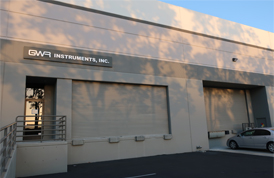About GWR Instruments, Inc. and the Superconducting Gravimeter
GWR Instruments, Inc. is the sole manufacturer of the Superconducting Gravimeter which provides a stable, extremely precise long term gravity record.
The Superconducting Gravimeter (SG) was invented by J. Goodkind and W. Prothero at the University of California, San Diego in the mid 1960’s. In 1979, GWR Instruments was formed as a partnership by J. Goodkind, R. J. Warburton and R. C. Reineman to manufacture SGs for European customers. As demand increased, the company was incorporated in 1992 and is presently owned by Richard Warburton, Richard Reineman and Eric Brinton all of whom take great pride in their long term relationships with customers.
The Superconducting Gravimeter (SG) is a relative gravimeter in which the mechanical spring is used in most relative gravimeters is replaced with a magnetic field and a spherical spherical superconducting test mass. The magnetic field is produced by two superconducting magnet coils and since there is zero resistivity in superconductors, both the persistent currents flowing in the magnet coils and the induced currents in the sphere are ultra-stable and noise free. As a result, the SG is the most stable and low noise relative gravimeter in existence; however, this also means that the SG sensor must be operated inside a bath of liquid Helium close to 4 Kelvin to retain its superconducting properties.
In the early years, the need to purchase, transport and transfer liquid helium restricted SG operation to observatory buildings. Fortunately, improved 4-Kelvin refrigeration systems now liquefy and recycle liquid helium in the dewar which eliminated this need; and as a result SGs can now operate anywhere in the world where enough power (1.5 kW) is available to operate the refrigeration system.
From 2003 to 2012, GWR exclusively sold the GWR Observatory Superconducting Gravimeter (OSG ) which - as with earlier SGs - was used mainly in about 30 observatories throughout the world as part of the Global Geodynamics Project1, 2. The GWR OSG has a stability approaching a few µGal/year and provides the lowest noise continuous measurement of long term gravity signals over periods of years to decades. The OSG also provides unprecedented nano-Gal resolution across a broad frequency band ranging from tidal periods (days) to long period seismic (1000 s) signals.
To encourage new applications that include volcanoes, geothermal and oil reservoirs, and hydrological applications, GWR Instruments introduced the new iGrav® SG in 2010. This new simplified system maintains the same operating features as the traditional OSG but is built into one stand-alone "package". The complete ½ sized Dewar houses all the redesigned electronics and data system within the top portion of the Dewar. The refrigeration system can cool the sensor from room temperature and till the Dewar with liquid helium in less than 10 days. The modular design and modernized electronics simplifies setup and operation and allow easier relocation to new sites.
In 2014 GWR started to manufacture remote field station enclosures that provide all the infrastructure need to operate the iGrav®. These enclosures include air conditioning, power management, lightening protection and integration with GPS and are suitable for rapid deployment in rugged field environments.
For a complete description of the Superconducting Gravity Meter, including its history, development, principle of operation, models, and scientific achievements see Superconducting Gravimetry by J. Hinderer, D. Crossley and R. Warburton which is referenced below.
References:
1. Global Geodynamics Project (https://www.eas.slu.edu/GGP/ggphome.html)
2. Hinderer J, Crossley D, and Warburton R.J, (2015) Superconducting Gravimetry,
Treatise on Geophysics, 2nd edition, (2015), vol. 3, pp. 59-115



 Print This Page
Print This Page

